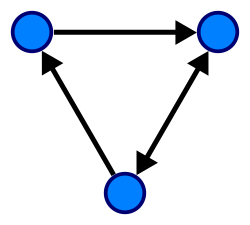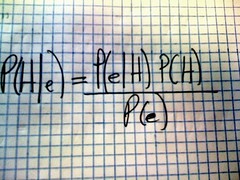I will go over this with a fine tooth comb. I am looking forward to Judea Pearl's 2nd editon of _Causality_. I will have to transfer a whole bunch of margin notes!
My take. Causality is a hack. The structure of the universe doesn't guarantee anything that would causality a fool-proof technique. But it is very effective, and it is a built-in hack in the brains of humans. Humans handle causal relationships quite naturally and usually correctly in simple (and not so simple) situations. But, very effective or not, it is still a hack.
Hack or not, you have to use causality to understand the world, and make decisions about the world, and make rational actions inside of the world.
I would make the cycle-free directed graph the _definition_ of causality. Then there is the "do" operator on the graph, where a node is constrained to a particular value, chosen by analysis or chosen by a randomizer (from a range suggested by analysis).
In this causal graph, you can have "nodes" that, inside, contain
** relations from statical properties of historical data
** relations from statical properties of simulations, however the simulation is constructed
** relations from scientific laws
** relations from non-scientific laws - like "rules of thumb" and other relations that no one would defend as being laws of nature
** relations suggested by symmetry
** relations suggested by "smoothness" - filling in gaps or smoothing errors with "simple" equations
** relations suggested by naive Bayesian - using the Bayesian equation to add missing information, possibly quite naively
The analysis begins with 3 or more of these causality graphs - each chosen from a different discipline of analysis, and each chosen as the "simplest" thing that could possibly work, to start.
The graphs suggest experiments to carry out, and the graphs can be scrutinized.
The graphs change, more are added, some are deleted, just keeping 3 or more, with examples from different effective domains of analysis (one graph may be suggested by the laws of physics, another by the laws of economics, another strictly statistical from historical data, another from political science storytelling, etc.)
Some quite optimistic (borrowing the analysis of the most active participants) and some quite pessimistic (even so pessimistic so that a majority of current activity would not be advised by the model).
Each is must simpler than reality, and, thus, suitable to run against many many different future eventualities. Keep them simple so they are nimble and responsive tools.
None would really be defended as the complete, because so simple. The cost of any complexity is considered to be great. Simple models, easily manipulated, quickly manipulated.
We would have a personal standard of rationality, and a lower standard for semi-rational actions in a group (economic/social groups are demonstratively loath to hold themselves to the highest disciplines of rationality). For the personal standard of rationality - think Socrates. For the lower standard of group semi-rationality - think Rush Limbaugh and Glenn Beck. Neither is better or worse than another, each is to be used in their own domain. The real-world economic/social group would immediately feel paralyzing anxiety when presented arguments from people who hold themselves to the highest disciplines of rationality - so it is irrational to present that to them.
Judea Pearl describes his new article Causal inference in statistics: An Overview as 'a recent submission to Statistics Survey which condenses everything I know about causality in only 40 pages.' That seemed like a bold claim, but after reading it I'm sold. I don't come from Pearl's 'camp' per se, but I found this a really impressive overview of his approach to causation. His overtures to folks like me who use the potential outcomes framework were much appreciated, although it is clear throughout that there is still intense debate on some of the issues. The bottom line: if you've ever wondered what the structural equation modeling approach to causal inference is all about, this is your one-stop, must-read introduction (and an insightful, engaging, and thorough one at that).
"



![Reblog this post [with Zemanta]](http://img.zemanta.com/reblog_e.png?x-id=7d2eae6c-e832-48c3-a195-bc9c784f14eb)
No comments:
Post a Comment